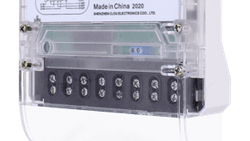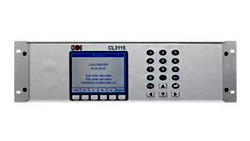As the demand for electrical energy continues to rise, ensuring the safety, reliability, and efficiency of power systems is of paramount importance. Power system protection plays a critical role in safeguarding these systems from faults and abnormalities that can disrupt supply, cause equipment damage, and even pose risks to human life.
In this article, we will explore the emerging trends in power system protection and fault detection, highlighting advancements in technology and strategies that are shaping the future of electrical energy systems.
Importance of Power System Protection
Power system protection is essential for maintaining the integrity and stability of electrical networks. Its primary goal is to identify and isolate faults promptly, minimizing their impact and preventing cascading failures. Protection systems ensure the safety of personnel, equipment, and consumers, while also maximizing the availability and reliability of power supply.
Traditional Protection Schemes
Conventional protection methods have relied on devices such as relays, circuit breakers, and fuses. These devices are designed to detect abnormalities in current, voltage, and frequency, and initiate protective actions such as tripping circuit breakers to isolate faulty sections. While effective, these schemes often lack the flexibility and intelligence required to handle the complexities of modern power systems.
Advanced Protection Technologies
The advent of digital technologies has brought about significant advancements in power system protection. Digital relays, for instance, offer enhanced accuracy, programmability, and communication capabilities. Phasor Measurement Units (PMUs) and synchro-phasors provide synchronized measurements of voltage and current across the power system, enabling faster fault detection, dynamic system monitoring, and real-time control.

(symbol image, credit CLOU)
Wide-Area Monitoring Systems
Wide-area monitoring and protection systems have emerged as powerful tools for enhancing fault detection and system stability. By using synchronized measurements from multiple PMUs located across the network, these systems provide a comprehensive view of the power system's state and dynamics. They enable early fault detection, rapid system restoration, and enhanced situational awareness, thus improving overall system resilience.
Fault Location and Diagnosis
Accurate fault location and diagnosis are crucial for minimizing downtime and reducing maintenance costs. Travelling wave-based methods utilize the propagation characteristics of fault-induced waves to pinpoint fault locations accurately. Fault location algorithms leverage measurements from PMUs, digital relays, and other devices to estimate fault locations based on system impedance and network topology.
Adaptive Protection Schemes
Adaptive protection schemes offer the ability to dynamically adjust protection settings and strategies based on real-time system conditions and operational requirements. These schemes incorporate advanced algorithms and machine learning techniques to optimize fault detection, coordination, and system response. By adapting to changing network conditions, adaptive protection enhances reliability while minimizing unnecessary tripping and system disruptions.
Cybersecurity Challenges in Protection Systems
As power systems become increasingly digitized and interconnected, the risk of cyber-attacks on protection systems grows. Protecting these critical assets from malicious activities is imperative. Robust cybersecurity measures, including secure communication protocols, encryption, access controls, and intrusion detection systems, are essential to safeguard power systems from cyber threats.
Integration of Protection Systems with Automation and Control
Integration of protection systems with supervisory control and data acquisition (SCADA) systems and intelligent electronic devices (IEDs) enables enhanced monitoring, control, and coordination capabilities. IEDs often have multiple functions and can be programmable to adapt to different system requirements. They are designed to integrate with other devices and systems in the power grid, such as protective relays, meters, control systems, and communication networks. Some common examples of IEDs include digital relays, programmable logic controllers (PLCs), remote terminal units (RTUs), and substation automation systems.
This integration allows for seamless information exchange between protection systems and other operational technologies, facilitating faster response times, improved fault management, and optimized system performance.
Fault Analysis and System Performance Improvement
Thorough fault analysis and system performance evaluation provide valuable insights for improving power system protection, reliability, and efficiency. Advanced fault recording and analysis tools enable engineers to study fault events in detail, identify root causes, and implement preventive measures. By analysing fault data and system behaviour, engineers can optimize protection settings, enhance system planning, and minimize future fault occurrences.
Takeaway
The field of power system protection and fault detection is experiencing significant advancements driven by digital technologies, automation, and data analytics. These emerging trends offer new opportunities to enhance the safety, reliability, and efficiency of electrical power systems.
By adopting advanced protection technologies, integrating systems, addressing cybersecurity challenges, and leveraging fault analysis, engineers can pave the way for a more resilient and intelligent power grid capable of meeting the evolving energy demands of the future.
If you have any questions regarding our fault-finding-, metering and data acquisition solutions, don't hesitate to contact us. Our experts are readily available to provide you with the information and assistance you need.
Editor's note: This article was originally published in September 2023 and has been updated for comprehensiveness.





All comments are moderated before being published. Inappropriate or off-topic comments may not be approved.